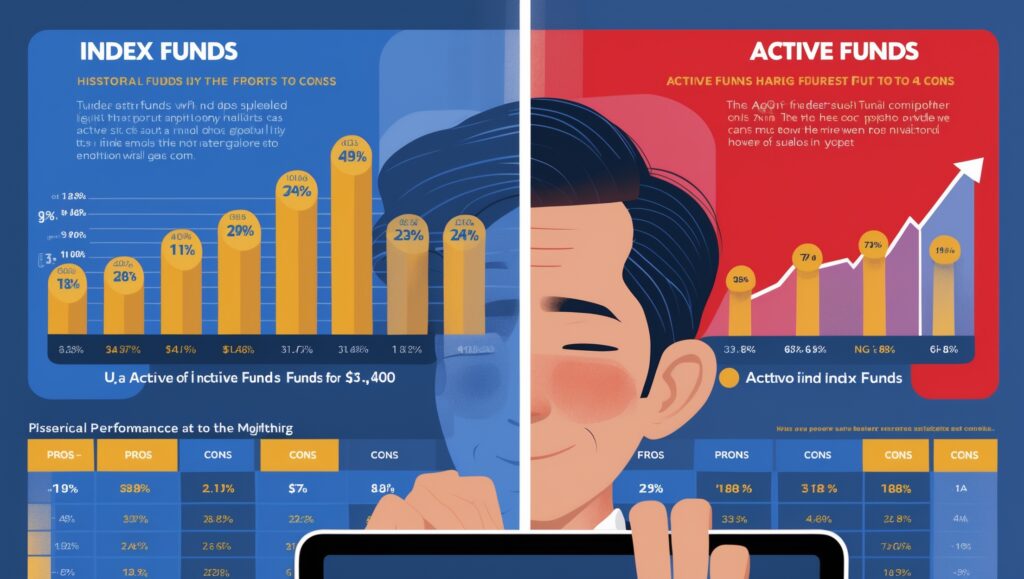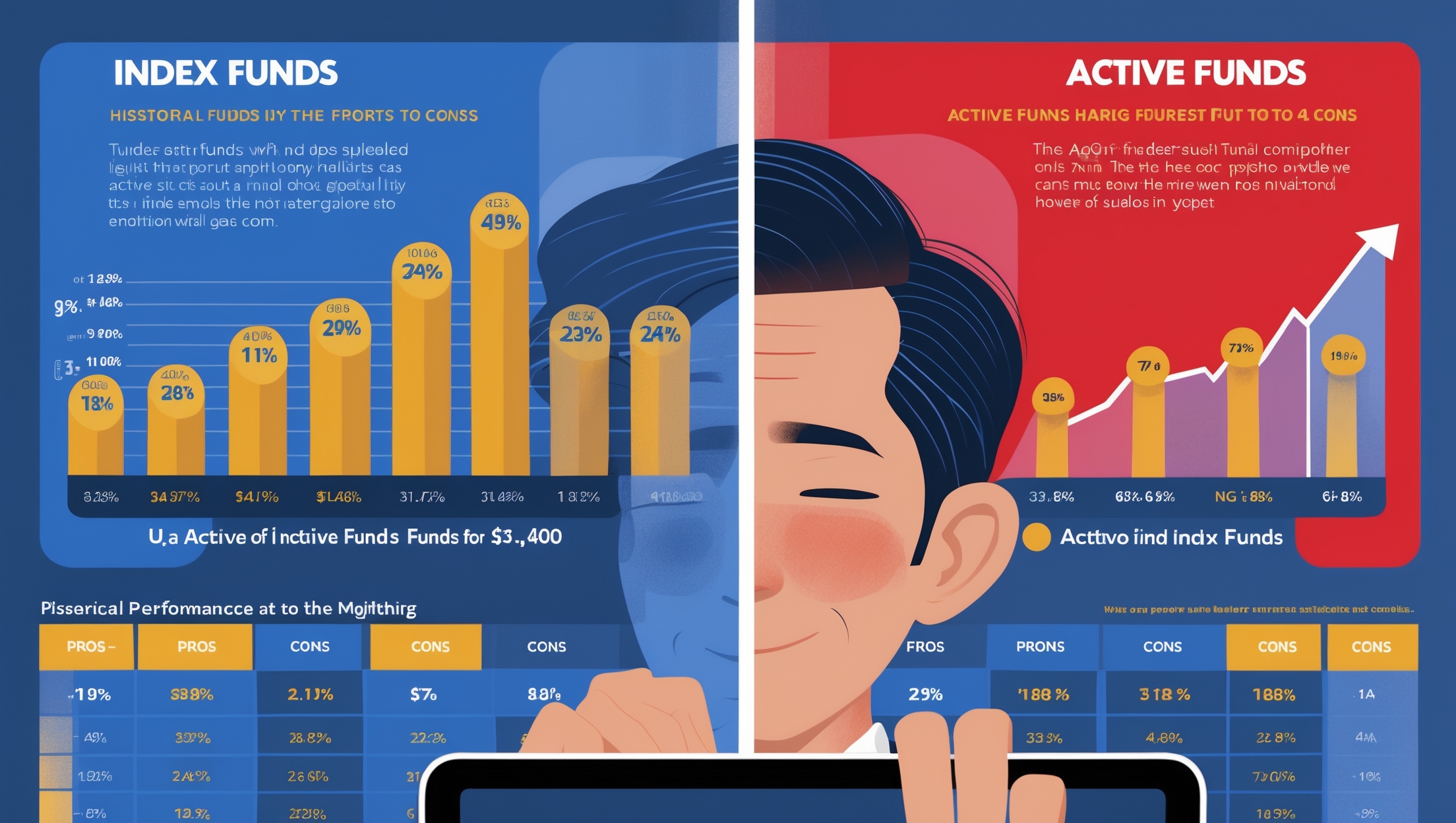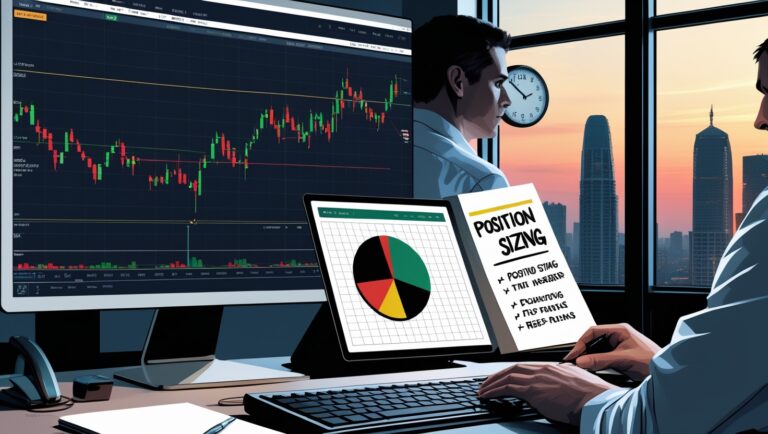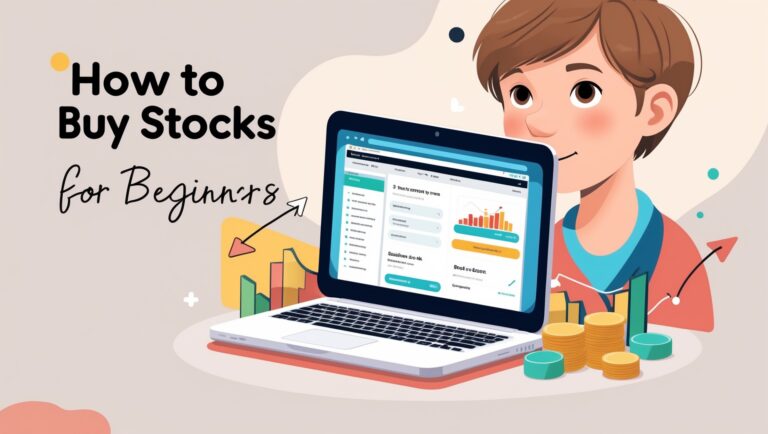Understanding Index Funds vs. Active Funds: Pros and Cons
Understanding Index Funds vs. Active Funds: Pros and Cons
Learn the difference between index funds and active funds, their pros and cons, and how I personally choose between them to build a diversified portfolio that grows steadily and minimizes risk.

Table of Contents
When I first started investing, I was overwhelmed by all the fund options. Then I discovered index funds. They are simple: these funds aim to mirror a market index, like the S&P 500, by holding the same stocks in the same proportions.
For me, index funds are about simplicity, low costs, and consistent performance. They don’t try to beat the market—they simply match it, and over time, that approach has been very effective.
What Are Active Funds?
Active funds, on the other hand, are managed by fund managers who actively pick stocks in an attempt to outperform the market. At first, the idea sounded exciting—I could potentially earn more if the manager made the right moves.
But I quickly learned that higher potential returns come with higher fees and more risk. Active funds often charge 1% or more annually, which may not seem like much, but it compounds over time.
Pros of Index Funds
There are several reasons I like index funds:
- Low fees – Less money goes to management, more stays invested.
- Diversification – Holding a broad market index spreads out risk.
- Consistent performance – Over the long run, they often outperform many active funds.
- Simplicity – I don’t have to analyze every stock; the fund does it for me.
For me, this combination of low cost, simplicity, and reliability makes index funds a core part of my portfolio.
Pros of Active Funds
Active funds have their advantages too:
- Potential to outperform – A skilled manager can beat the market.
- Flexibility – They can adjust to changing market conditions.
- Focus on niche markets – Some active funds target specific industries or strategies that may not be represented in broad indexes.
I occasionally use active funds in my portfolio, but only when I trust the manager and the fees make sense.
Cons of Index Funds
Of course, index funds aren’t perfect.
- No chance to beat the market – If you want above-average returns, you won’t get them here.
- Market exposure – When the market drops, index funds drop too.
Still, for me, these drawbacks are minor compared to the benefits of low fees and diversification.
Cons of Active Funds
Active funds have bigger risks in my opinion:
- High fees – These eat into returns over time.
- Underperformance risk – Many active funds fail to beat their benchmark after fees.
- Dependence on manager skill – If the manager makes poor choices, your returns suffer.
Because of these factors, I only use active funds selectively.
How I Choose Between Index and Active Funds
I personally allocate the majority of my portfolio to index funds for stability and growth, then add a smaller portion of active funds when I see opportunities in niche areas.
This approach balances consistency and growth potential. It allows me to capture broad market returns while still taking advantage of skilled managers in areas I believe have upside.
Combining Both Strategies
For me, the best strategy is often a combination:
- Core – Broad index funds for market exposure and low fees.
- Satellite – Active funds for targeted growth and potential outperformance.
This “core-satellite” approach is simple but effective. It gives me peace of mind, knowing my portfolio is balanced.
Want My Complete Strategy?
If you want to see how I personally use index funds and active funds together to generate consistent income and grow my portfolio, I explain my step-by-step approach in my ebook: Pay Bills with Stocks.
Inside, I show exactly how I allocate, pick funds, and manage risk while still aiming to cover real-life expenses with my investments.
Final Thoughts
Index funds and active funds both have their place. For me, index funds provide stability, low fees, and consistent returns, while active funds offer targeted growth opportunities.
By combining the two thoughtfully, I can build a portfolio that balances risk and reward, protects my capital, and still generates steady growth over time.
If you want to see my full system for using these funds to actually generate monthly income, check out my guide: Pay Bills with Stocks.
One thing I’ve learned is that index funds are ideal for long-term, hands-off investors like me. I don’t have to monitor the market daily, and I still capture the overall growth of the economy over time.
I also appreciate the predictability of fees. With index funds, I know exactly what I’m paying, and it’s minimal. That consistency helps me plan my portfolio without surprises.
For active funds, I’ve learned the importance of researching the manager’s track record. Some fund managers consistently beat their benchmarks, but many do not. Knowing this helps me avoid wasting money on underperformers.
Another key lesson is that volatility behaves differently in index vs. active funds. Index funds follow the market up and down, while active funds can swing more wildly depending on the manager’s choices. Understanding this helps me manage my stress levels.
I also pay attention to fund size. Very large active funds may struggle to maneuver quickly, while very small funds can be risky if they lack resources. Index funds, by contrast, scale naturally with the market.
One strategy I use is to start with index funds as a core for stability, then selectively add active funds when I see a sector with potential growth. This way, I get both safety and opportunity in the same portfolio.
I’ve learned to evaluate expense ratios closely. Even a small difference in fees can compound significantly over decades. That’s why I favor index funds for the bulk of my investments—they’re cheap and efficient.
Sometimes, active funds make sense when the market is inefficient or in niche sectors. For example, a technology-focused active fund may outperform an index if the manager has strong insight. I use this sparingly and selectively.
I also look at turnover rates. High turnover in active funds can generate taxes and additional costs, reducing overall returns. Index funds usually have very low turnover, which is another advantage for me.
Tracking my portfolio regularly helps me understand the balance between index and active funds. I make minor adjustments if allocations drift too far from my strategy, but mostly I let the funds grow over time.
I’ve found that using both types of funds teaches discipline. Index funds encourage patience and long-term thinking, while active funds require me to analyze and make informed decisions. Combining both has improved my investing skills.
Another benefit of index funds is that they provide instant diversification. One fund can hold hundreds or even thousands of stocks, reducing the impact of any single company’s poor performance on my overall portfolio.
I also pay attention to benchmark performance. Comparing active funds to their respective benchmarks helps me decide if they’re worth holding. Many fail to outperform after fees, which is why I’m selective.
For me, the key is simplicity with flexibility. Index funds provide a solid foundation that grows steadily, while active funds add a layer of potential growth in areas I believe have strong opportunities.
Finally, if you want to see exactly how I combine index funds and active funds to generate steady income and grow my portfolio, I break it all down in my ebook: Pay Bills with Stocks. It’s the system I personally use to build wealth while covering real-life expenses each month.

Stay ahead in the stock market! Subscribe to our newsletter and receive exclusive stock flow reports, trading insights, and actionable tips directly in your inbox. Join thousands of traders who get our updates first.







